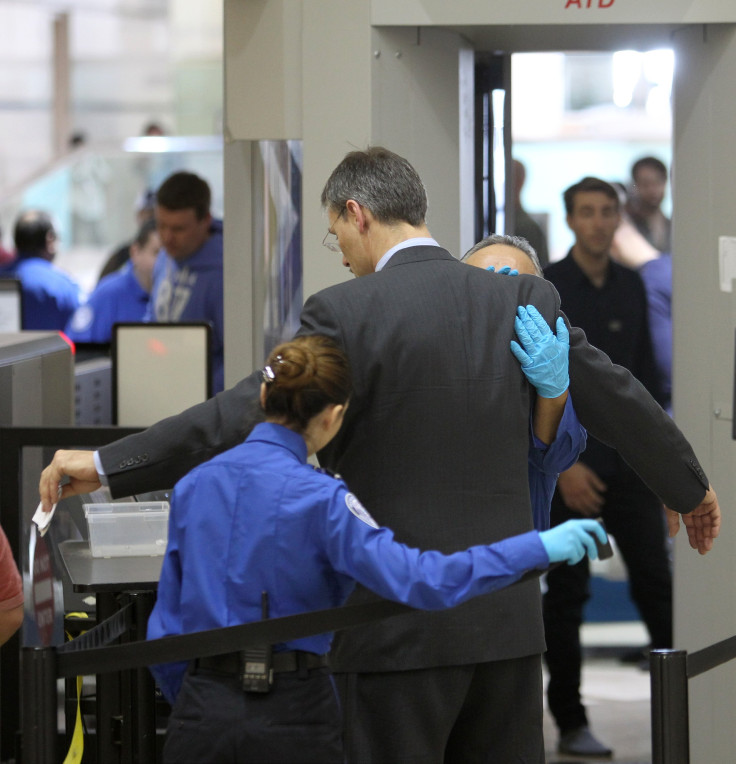New TSA Rules: More Comprehensive Pat-Downs Lead Airport Security To Notify Local Police

After announcing the implementation of more “comprehensive” pat-down procedures, the U.S. Transportation Security Administration has alerted local law enforcement officials in case travelers become alarmed about the new methods. While airport security workers were previously able to choose between five different types of pat-downs, new screening outlines consolidated it into one universal approach.
Because the change might alarm some passengers, the TSA informed local police should they receive any reports of “abnormal federal frisking,” Bloomberg News reported Monday.
“Due to this change, TSA asked FSDs [field security directors] to contact airport law enforcement and brief them on the procedures in case they are notified that a passenger believes a [TSA employee] has subjected them to an abnormal screening practice,” the Airports Council International-North America said in a statement, according to Bloomberg.

The new pat-down procedure was set to go into effect at smaller airports before being rolled out in larger facilities in an attempt to “reduce the cognitive burden” on employees who previously had to choose between five different procedures. The change was also due in part to a 2015 audit conducted by the Department of Homeland Security which revealed that the previous screening procedures failed to detect concealed weapons like handguns.
“Passengers who have not previously experienced the now standardized pat-down screening may not realize that they did in fact receive the correct procedure and may ask our partners, including law enforcement at the airport, about the procedure,” TSA spokesman Bruce Anderson wrote in an email, according to Bloomberg.
Physical screening at airports has long been the subject of a debate over privacy versus security. Many travelers have voiced disdain for the practice in the past, and in 2010, then-Secretary of State Hillary Clinton made waves when she said she would “avoid it” if she could.
Pat-down searches typically take place when a traveler refuses to walk through an imaging scanner or when the scanner picks up on an unknown object. A pat-down can involve the “inspection of the head, neck, arms, torso, legs and feet” as well as “head coverings and sensitive areas such as the breasts, groin and the buttocks,” according to the TSA website. The new procedures, though more intimate, will not “involve any different areas of the body than were screened in the previous standard pat-down procedure.”
© Copyright IBTimes 2024. All rights reserved.






















